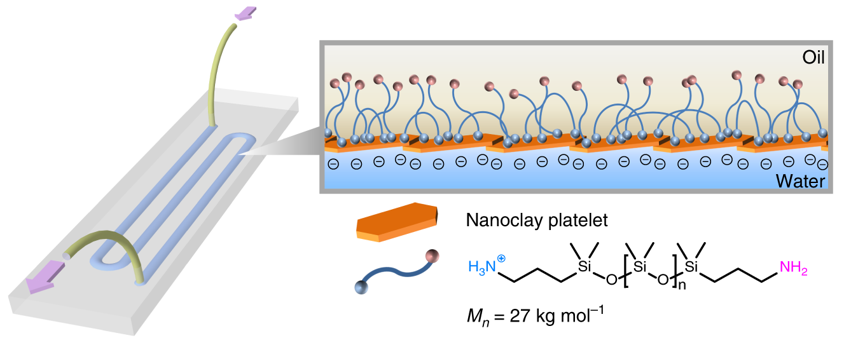Researchers from the Lawrence Berkeley National Laboratory, a Department of Energy (DOE) office lab managed by University of California, have 3D printed an all-liquid device to be used in the chemical synthesis of batteries and drug formulations.
“Our 3D printed device can be programmed to carry out multistep, complex chemical reactions on demand,” said Brett Helms, a staff scientist in Berkeley Lab’s Materials Sciences Division and Molecular Foundry, who led the study published in Nature Communications.
“What’s even more amazing is that this versatile platform can be reconfigured to efficiently and precisely combine molecules to form very specific products, such as organic battery materials.”
All liquid 3D printing
Last year, Helms and Thomas Russell a visiting faculty scientist in Berkeley Lab’s Materials Sciences Division, developed novel liquid structures using a modified Qidi X-one 3D printer. With the X-one, liquids were printed at the micron scale, allowing researchers to “place threads of water anywhere we want in three dimensions.”
These threads of water created liquid tube structures suspended in a container of oil. This research has led the Berkely Lab team to further investigate the applications of this method. Helms added, “After that successful demonstration, a bunch of us got together to brainstorm on how we could use liquid printing to fabricate a functioning device.”
“Then it occurred to us: If we can print liquids in defined channels and flow contents through them without destroying them, then we could make useful fluidic devices for a wide range of applications, from new types of miniaturized chemical laboratories to batteries and electronic devices.”

3D printable fluidic devices
To make a 3D printable fluidic device, Wenqian Feng, a postdoctoral researcher in Berkeley Lab’s Materials Sciences Division and lead author of the new study, designed a specially patterned glass substrate.
This allows two liquids to come together within milliseconds form a very thin channel or tube about 1 millimeter in diameter. These liquids consist of nanoscale clay particles and polymer particles and can be 3D printed into bridges between channels to connect flowing chemicals. With computer controls, a desired chemical reaction can be conducted.
Helms continued, “The form and functions of these devices are only limited by the imagination of the researcher.”
“Autonomous synthesis is an emerging area of interest in the chemistry and materials communities, and our technique for 3D-printing devices for all-liquid flow chemistry could help to play an important role in establishing the field.”
“Harnessing liquid-in-liquid printing and micropatterned substrates to fabricate 3-dimensional all-liquid fluidic devices,” is co-authored by Wenqian Feng, Yu Chai, Joe Forth, Paul D. Ashby, Thomas P. Russell, and Brett A. Helms.

Vote for an “Academic/Research team” for the 2019 3D Printing Industry Awards.
Subscribe to our 3D printing newsletter and follow us Facebook and Twitter for the latest additive manufacturing updates.
Visit our 3D Printing Jobs board to find out more about opportunities in additive manufacturing.
Featured image shows a 3D printed all-liquid fluidic device. Clip via Lawrence Berkeley National Laboratory.


